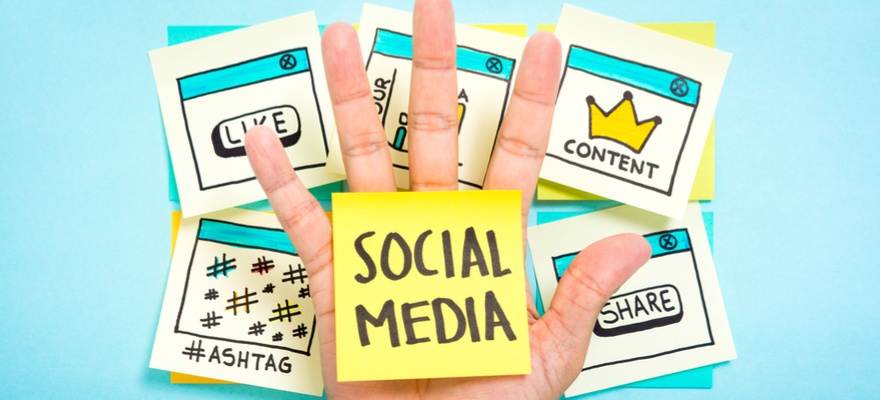5 ways for B2B companies to measure the benefits of social media
Social media actually has more potential to deliver bottom line benefits for B2B companies than their B2C counterparts, for five main reasons: Find out...

Today I had a meeting with another successful software company that asked me a familiar question: Should we be using social media? They thought they probably should because there is so much talk about the subject, but would it be worth all the effort? Well the short answer is:” It’s not a silver bullet but it can have a direct impact on sales and word of mouth reputation and it is a cost-effective way of achieving those common and important objectives.”
Social media is best for B2B
In their recent ‘The B2B Social Media Book’ B2B inbound marketing experts Kipp Bodnar and Jeffrey Cohen argue that social media actually has more potential to deliver bottom line benefits for B2B companies than their B2C counterparts, for five main reasons:
1. It helps you to get a clearer understanding of your customer and shifting opinions in your market: Find out what’s on the customers mind. More and more customers are taking to online forums, LinkedIn groups and Twitter to ask questions, vent frustrations and express opinions.
2. Social media platforms give B2B companies the opportunity to demonstrate the knowledge leadership that is such an important weapon in the B2B marketing arsenal.
3. Social media helps tight marketing budgets work harder. The 2011 State of Inbound Marketing research found that as part of an inbound digital marketing strategy social media marketing is up to 62% cheaper than traditional marketing methods that seek to interrupt the customer.
4. Relationships matter more in B2B sales. The relationship that a customer has with a salesperson is often the most important way in which he/she experiences a supplier’s brand. In long, complex and high value sales environments trust and credibility are hugely important and social media is an excellent way of building and strengthening relationships.
5. Many B2B companies already have the fundamentals in place and may well have been using them for years: Case studies and newsletters for example share ideas and experiences for the benefit of customers.
Where's the evidence to prove that B2B social media has measurable results?
B2B usae of social media is still in its infancy but with time and experience a clearer statistical picture is now beginning to emerge:
1. Your customer is almost certainly using social media: Citibank recently found that 90% of its customer’s executives used social media for business purposes. Find out if your customers do too by taking a look at the profiles of individual existing customers on Twitter, LinkedIn and Facebook. Look too at subjects being discussed that are relevant to how you can help your customers. If you are supplying ERP solutions, wherever you find conversations about ERP, you’ll also find prospects. If you have the time or resources carry out some research into your market.
2. Social media activity boosts both inbound links and website traffic: 45% of B2B companies using social media improve their search rankings as a result (BTOB magazine 2010). Social media activity boosts inbound links because if your content is good, people share it and refer back to your website. Inbound links improve search results and website traffic.
3. Social media engagement leads to business: Hubspot’s 2011 State of Inbound Marketing Report found that 61% of B2B companies had acquired customers directly from LinkedIn and 39% from Twitter. If your site is also set up for visitor lead conversion as part of an Inbound Marketing strategy, it has the potential to produce more qualified leads.
Measuring the results of your B2B social media
So, if your customers are on Twitter, LinkedIn, using Pinterest and Facebook, how should you measure the putting in place a social media strategy?
The most obvious is growth of following but a far more important statistic in a B2B context is what percentage of followers convert to leads by taking some kind of action like downloading an eBook, signing up to a newsletter or subscribing to a bog? Once you have gathered some contact information you can use a tool like Hubspot to qualify the lead further by understanding what content they are interested in and consequently the nature of their pains and challenges. Segmentation then becomes possible. You can begin to understand which platforms and what types of content appeal to potential customers.
How many of those leads convert to customers? Knowing this will allow you to understand the effectiveness of your social media campaigns.To calculate the R.O.I. you must account for the cost of producing the content that is required for a social media programme and that will be significant. And don't forget the opportunity cost of what your staff may otherwise have been doing with their time or you might have been doing with your budget.
As social increasingly drives SEO and the R.O.I. of many traditional Outbound marketing methods continue to fall, social media can make a significant contribution to most B2B lead generation efforts.
 Ian Guiver
Ian Guiver